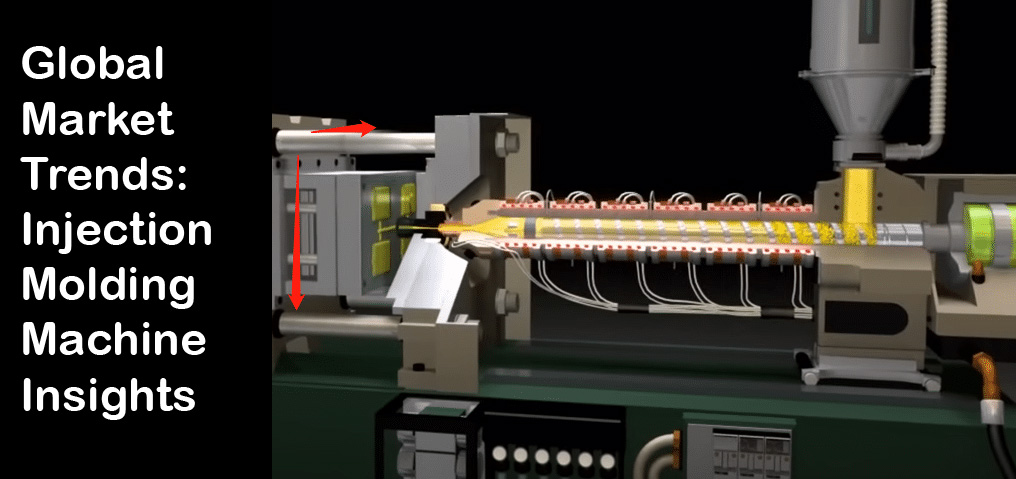In the ever-evolving landscape of manufacturing and industrial technologies, injection molding machines hold a pivotal role. These machines, used in various industries, have witnessed remarkable advancements and shifts in demand. To navigate this dynamic landscape successfully, it’s crucial to stay informed about the latest global market trends in injection molding machines. In this blog post, we provide insights into the key trends shaping the industry.
The Growing Importance of Sustainability
In today’s industrial landscape, sustainability is no longer just a buzzword; it’s a fundamental driver of innovation and progress. The injection molding industry is no exception. Let’s explore why sustainability has become a central consideration for manufacturers and how it’s shaping the future of injection molding machines.
Addressing Environmental Concerns
As environmental concerns continue to intensify globally, industries are under increasing pressure to reduce their environmental impact. Injection molding, a widely used manufacturing process, is no exception. Manufacturers are now focusing on adopting more sustainable practices, and this includes the machinery they use.
Recyclable Materials
One significant shift in the industry is the preference for recyclable materials. Traditional plastics have faced scrutiny due to their long-lasting environmental footprint. Manufacturers are increasingly turning to bioplastics and other recyclable materials that have a reduced impact on the environment. Injection molding machines that can efficiently process these materials are in high demand.
Energy Efficiency
Another key aspect of sustainability is energy consumption. Older injection molding machines were often energy-intensive, contributing to higher operational costs and environmental impact. Modern machines are designed with energy efficiency in mind. They incorporate features such as variable frequency drives (VFDs) and optimized heating and cooling systems to minimize energy consumption.
Waste Reduction
Reducing waste is a critical sustainability goal. Injection molding machines are now equipped with features that minimize material waste. This includes precise control over the injection process, which reduces the need for excess material, and the ability to recycle scrap material within the machine itself.
Bioplastics and Green Materials
A notable development in the injection molding industry is the increasing use of bioplastics and green materials. These materials are derived from renewable sources like corn starch, sugarcane, or algae. They are not only sustainable but also biodegradable, making them a responsible choice for manufacturers concerned about their environmental footprint.
Benefits of Bioplastics
- Reduced Carbon Footprint: Bioplastics produce fewer greenhouse gas emissions during their production compared to traditional plastics.
- Reduced Dependency on Fossil Fuels: Bioplastics are derived from renewable resources, reducing reliance on fossil fuels.
- Biodegradability: Some bioplastics are fully biodegradable, reducing long-term environmental impact.
The adoption of bioplastics and green materials aligns with global sustainability goals and regulatory requirements, making them a pivotal trend in injection molding.
Customization and Flexibility
In the dynamic world of manufacturing, the ability to adapt quickly to changing demands and market trends is paramount. This is where customization and flexibility in injection molding machines come into play. Let’s delve into how these qualities are shaping the industry and why they are crucial for manufacturers.
Demand for Diverse Product Ranges
Manufacturers today face a marketplace driven by consumer preferences that change rapidly. To stay competitive, businesses need to be agile and capable of producing a diverse range of products. Injection molding machines that offer customization and versatility are invaluable in this context.
Quick Changeovers
One key feature manufacturers seek in injection molding machines is the ability to perform quick changeovers between different molds and product specifications. Machines that facilitate rapid mold changes enable businesses to switch production lines swiftly, reducing downtime and increasing productivity.
Multi-Cavity Molds
Multi-cavity molds are another tool for enhancing production flexibility. These molds allow multiple identical parts to be produced in a single cycle, increasing output without significantly increasing machine capacity. For manufacturers, this translates to cost efficiency and higher production rates.
Modular Machine Design
Modularity is a defining trend in the injection molding industry. Modular machine designs offer manufacturers the flexibility to configure machines according to their specific production needs. This adaptability is particularly valuable for businesses with varied product lines and production requirements.
Scalability
Modular machines can be easily scaled up or down as production demands change. This scalability minimizes the need for investing in entirely new machines when production requirements fluctuate.
Reduced Complexity
By breaking down machines into modular components, manufacturers can reduce complexity. Each module can be optimized for its specific function, leading to increased efficiency and easier maintenance.
Cost Savings
Modular designs not only enhance flexibility but also result in cost savings. Manufacturers can invest in the components they need, avoiding unnecessary expenses on features that don’t align with their production goals.


